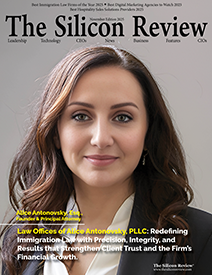>>
Industry>>
Public Relations>>
White House Signals Supply Cha...White House Signals Supply Chain Overhaul with National Security Tariff Justification
The Silicon Review
07 April, 2025
Citing national security threats and industrial vulnerability, the White House defends sweeping auto import tariffs under Section 232—redefining trade policy as a lever for U.S. manufacturing resilience.
In a move that reshapes the narrative around economic policy and industrial autonomy, the White House has formally justified new auto import tariffs under Section 232 of the Trade Expansion Act. The administration's proclamation, issued on March 17, 2025, frames the 25% tariffs not as punitive trade measures, but as a strategic imperative tied directly to national security and industrial resilience. Officials point to lessons drawn from the COVID-19 pandemic, where exposed vulnerabilities in global supply chains left U.S. manufacturers dependent on foreign-subsidized components, risking operational paralysis in critical sectors. The statement outlines an intention to reduce reliance on overseas suppliers, specifically in high-volume and precision auto manufacturing, by bolstering domestic capacity through protective trade levers.
This policy posture has immediate implications for automation stakeholders. U.S.-based industrial automation firms stand to benefit from a redirected flow of federal and private investment as OEMs seek to localize operations with smarter, leaner production frameworks. The shift could spur an accelerated adoption of adaptive robotics, predictive maintenance software, and AI-integrated manufacturing platforms designed to support high-throughput domestic production with minimal labor volatility. For public relations professionals in the industrial space, the messaging from Washington signals a reframing of automation not just as a cost-saving measure, but as a pillar of national interest. Enterprises able to align their brand narrative with these emerging themes—security, self-reliance, and technological leadership—are better positioned to capture federal partnerships, unlock funding pipelines, and secure long-term supply contracts.
As geopolitical tensions fade into the background of this communication strategy, the core takeaway is clear: automation, once viewed as a competitive advantage, is now positioned by federal policy as a necessity for economic fortification.


_2025-11-17_06-38-14.webp)

 (1)_2025-10-21_13-35-14.webp)

_2025-10-02_10-21-48.webp)